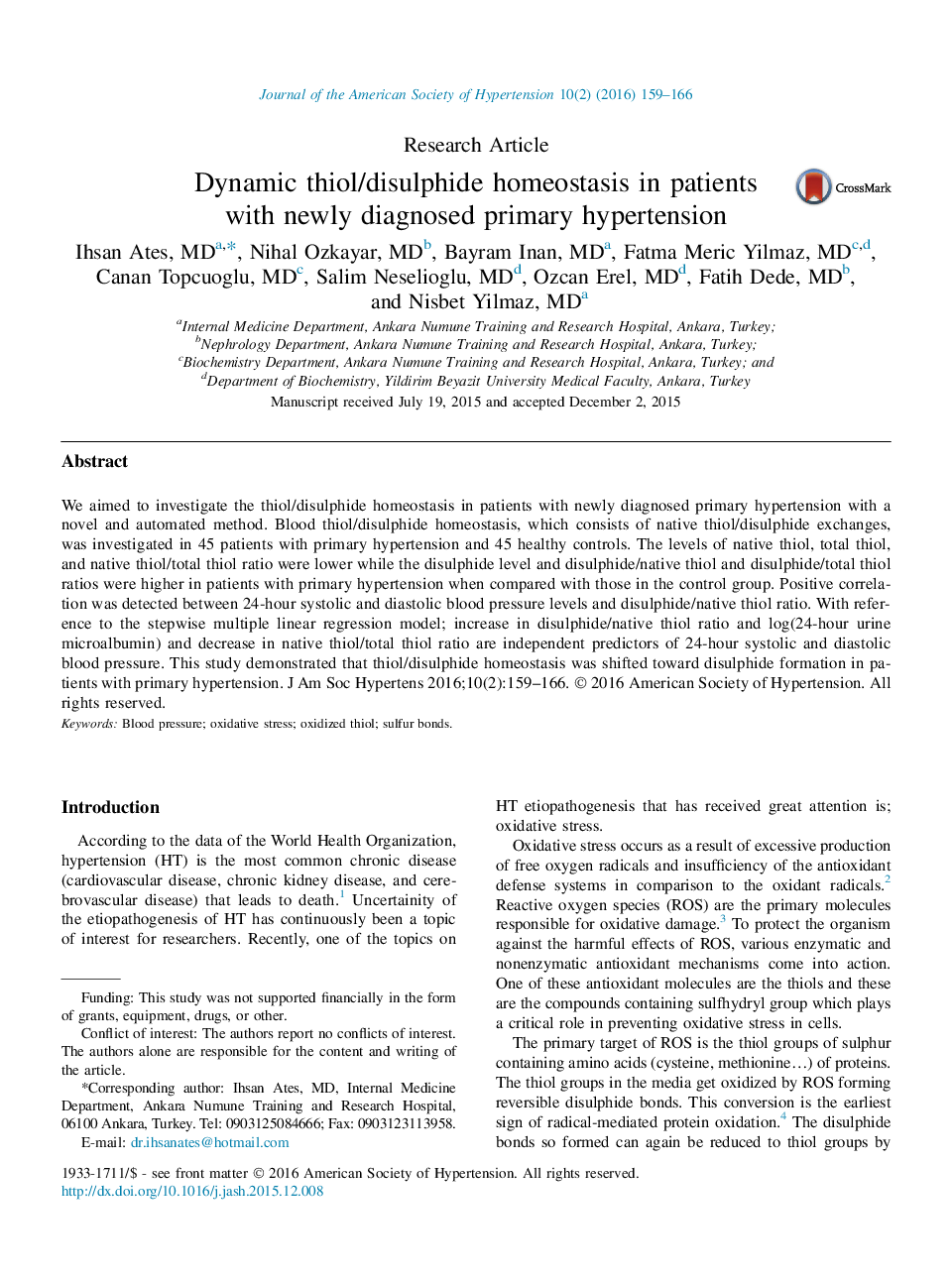| Article ID | Journal | Published Year | Pages | File Type |
|---|---|---|---|---|
| 2956899 | Journal of the American Society of Hypertension | 2016 | 8 Pages |
•We aimed to determine dynamic thiol/disulphide homeostasis in primary hypertension (HT).•Thiol/disulphide balance was shown to shift toward disulphide form in HT group.•24-hour systolic blood pressure and diastolic blood pressure displayed a positive correlation with disulphide or native thiol.•Disulphide or native thiol was determined as an independent risk factor for HT.•This suggests that abnormal thiol or disulphide may be associated with primary HT.
We aimed to investigate the thiol/disulphide homeostasis in patients with newly diagnosed primary hypertension with a novel and automated method. Blood thiol/disulphide homeostasis, which consists of native thiol/disulphide exchanges, was investigated in 45 patients with primary hypertension and 45 healthy controls. The levels of native thiol, total thiol, and native thiol/total thiol ratio were lower while the disulphide level and disulphide/native thiol and disulphide/total thiol ratios were higher in patients with primary hypertension when compared with those in the control group. Positive correlation was detected between 24-hour systolic and diastolic blood pressure levels and disulphide/native thiol ratio. With reference to the stepwise multiple linear regression model; increase in disulphide/native thiol ratio and log(24-hour urine microalbumin) and decrease in native thiol/total thiol ratio are independent predictors of 24-hour systolic and diastolic blood pressure. This study demonstrated that thiol/disulphide homeostasis was shifted toward disulphide formation in patients with primary hypertension.
